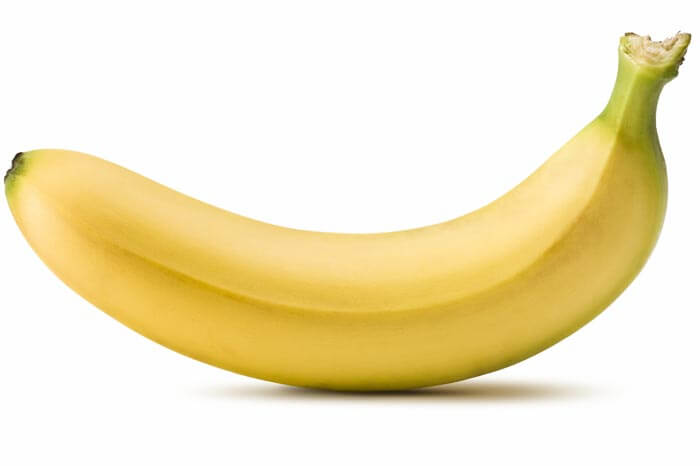What is the “Stomach Flu”?
Stomach flu refers to the irritation and inflammation of the stomach and intestines. It is usually caused by a virus or bacteria. The stomach flu has no relation to the flu or influenza, which can be potentially prevented by an influenza vaccine. The stomach flu is more commonly known as a stomach bug and is a group of viruses that can upset your stomach, bringing on nausea, vomiting, and diarrhea.
The good news is that, in most cases, a stomach bug is not a serious illness and will clear up on its own without stomach flu treatment. The best thing to do if you suspect the stomach flu is to encourage lots of rest. You can offer clear liquids in moderation to maintain hydration, but be sure not to overdo it as this can prolong the illness. After a few days, the stomach flu generally resolves itself.
If you, your child, or a loved one is sick, be on the lookout for these common symptoms of a stomach bug.
Signs of Stomach Flu:
- Diarrhea
- Nausea and vomiting
- Stomach ache/cramps
- Muscle ache/cramps
- Low-grade fever
- Sleepiness or crankiness

Your Child has the Stomach Flu, Now What?
Keep Your Child Hydrated
Hydration is the best treatment for the stomach flu. Pick any clear fluid—water, ginger ale that has gone flat, broth, or electrolyte solutions such as Pedialyte. Stay away from sugary sodas, sports drinks, and juices. These drinks are high in sugar, which can increase diarrhea and do not contain any nutritional benefits. Offer your child clear fluids frequently in small amounts. Small sips versus big gulps are best, and keep the sips spread out to ensure they can keep the liquids down before they drink more. Kids will, of course, feel thirstier when they are dehydrated from the stomach bug, and they may try to drink larger or multiple sips at a time if not supervised, which often leads to more vomiting or diarrhea and prolongs the sickness more.

When Can I Re-Introduce Food?
The rule of thumb is you can introduce foods when your child is starting to feel hungry again, but be sure to do so slowly and with caution. Most pediatricians recommend advancing to the BRAT diet. BRAT stands for:
- Bananas
- Ice
- Applesauce
- Toast (plain toast with no butter, jam, peanut butter, etc.)
Plain crackers are a fine substitute for toast. Try one item from the list and give it a little time to see how your child handles it. If it comes right back up or out, it’s too soon to be introducing solids. If they are feeling hungry but aren’t eating a lot, don’t be too concerned. Their stomach may be empty but they still may be worried about food coming back up again, so they may be hesitating to eat too much. Encourage them to take a bite every 10-15 minutes, followed by a small sip of a clear liquid.
How Do I Keep the Rest of My Family from Getting Sick?
Stomach bugs are very contagious and they can be spread the whole time your child is having diarrhea or vomiting, and even up to 24 hours after the worst symptoms have stopped.
The stomach flu can be spread through saliva and indirect contact. Regular and vigorous hand washing is a must, especially after diaper changes and potty trips. You should also wash toys as often as you can, especially if your kids are sharing them. Be sure to change sheets and pillowcases regularly during a stomach bug, and disinfect any surface the sick child has touched, including couches, pillows, blankets, door handles, light switches, and so on. The remote control, technological devices, books, and so on. Do your best to keep other people away from whoever is sick, even if that means kids stay in their bedrooms or on separate couches from each other.
Can I Prevent My Kids from Getting a Stomach Bug In the First Place?
Keeping hands clean is one of the best ways to prevent the spread of illness. Everyone in the family should wash hands before meals and after going to the bathroom. Additionally, hands should be washed after coughing or sneezing, after blowing noses, or after touching the mouth, nose, or eyes. To add to your overall health and minimize exposure to germs, wash your hands whenever you get home from being somewhere else, avoid unnecessary contact with other people, and be sure to eat a healthy and well-balanced diet.
Do You Know How to Properly Wash Your Hands?
- Wet your hands with clean running water (warm or cold)
- Apply soap and rub hands together making bubbles, scrubbing them well
- Continue to rub your hands together for at least 20 seconds: approximately the amount of time it takes you to sing “happy birthday” song twice
- Rinse your hands with clean running water
- Dry your hands with a clean towel, paper towel or allow to air dry
Prepare your Medicine Cabinet With Stomach Flu Remedies:
- Children’s fever reducer
- Thermometers
- Hand sanitizers
- Oral electrolyte solute such as Pedialyte
- Diaper rash cream to treat irritated bottoms
Is It Food Poisoning or the Stomach Flu?
Food poisoning shares some of the same symptoms as the stomach flu, except that it usually hits pretty quickly after eating the food that caused it. It often does not come with a fever and it usually goes away pretty quickly. A stomach bug, on the other hand, may hang around for three to five days or longer.
Stomach Flu vs. Food Poisoning
Being seriously sick is never enjoyable, but when you can’t pinpoint the cause of the sickness, it can be that much more frustrating. Not knowing how or why you got sick or what the best treatment options are can be incredibly stressful and can take a toll on your already ill body. If you’ve found yourself with abdominal pain or cramping, nausea and vomiting, or diarrhea, you may find yourself wondering if you have gotten food poisoning or if you’ve contracted the stomach flu. Here are a few ways to spot the differences between the stomach flu vs. food poisoning and how to proceed with getting better.
Symptoms
While the primary symptoms of both these issues are the same, they each have additional symptoms that can help you determine which illness you’re facing.
Food poisoning symptoms include the following:
- Abdominal pain or cramping
- Nausea & vomiting
- Diarrhea
- Dehydration
- High fever
- Blood in vomit or stools
- Headaches
- Weakness & blurry vision
- Bloating
- Liver problems
- Numbness, tingling, or burning sensations
- Renal problems
- Seizures
Stomach flu symptoms include the following:
- Abdominal pain or cramping
- Nausea & vomiting
- Diarrhea
- Fever
- Abdominal bloating
- Increasingly severe abdominal pain
- Dehydration
- Weakness
- Dry skin and dry mouth
How to Know the Difference Between Stomach Flu vs Food Poisoning
It’s not always easy to spot the differences between stomach flu and food poisoning. One big way to know which you’re suffering from is to know how long each lasts and what other symptoms come along with the digestive troubles.
How long does the stomach flu last?
The stomach flu generally lasts from one to five days and typically clears up on its own. It is usually viral, so antibiotics will not help get rid of it. In addition, the stomach flu will almost always have a fever along with the digestive issues.
How long does food poisoning last?
Food poisoning usually clears up on its own too but can last anywhere from a few hours to several days. It rarely is accompanied by a fever and most commonly, the symptoms will subside after your stomach has been emptied of the food that caused it. Food poisoning can usually be traced back to improperly prepared food, such as eggs, poultry, meats, and unpasteurized products, although you may not always be able to pinpoint the exact culprit. It can be more serious if the body isn’t able to rid itself of the harmful bacteria, and if your suspected food poisoning hasn’t subsided within 72 hours, it’s best to seek medical care to avoid risk of severe dehydration and rule out any other possible causes of the sickness.
Stomach Flu Treatment Options
The basic treatment options for both the stomach flu and food poisoning are the same. The most important thing to do with both is to minimize dehydration by consuming clear and low-sugar liquids, such as water, chicken broth, and electrolyte drinks. Avoid beverages that are too sugary or add to dehydration, such as coffee, tea, sodas, sports drinks, and fruit juices. Encourage small sips of approved liquids and small bites of food from the BRAT diet when the worst of the symptoms have subsided. The BRAT diet includes bananas, rice, applesauce, and toast. The toast should be plain, and plain crackers can be substituted. Just as with the liquids, take it slow when eating again.
If these stomach flu and food poisoning treatments don’t work, come in to a nearby TrueCare location to learn more about the stomach flu vs. food poisoning and how to overcome each.





